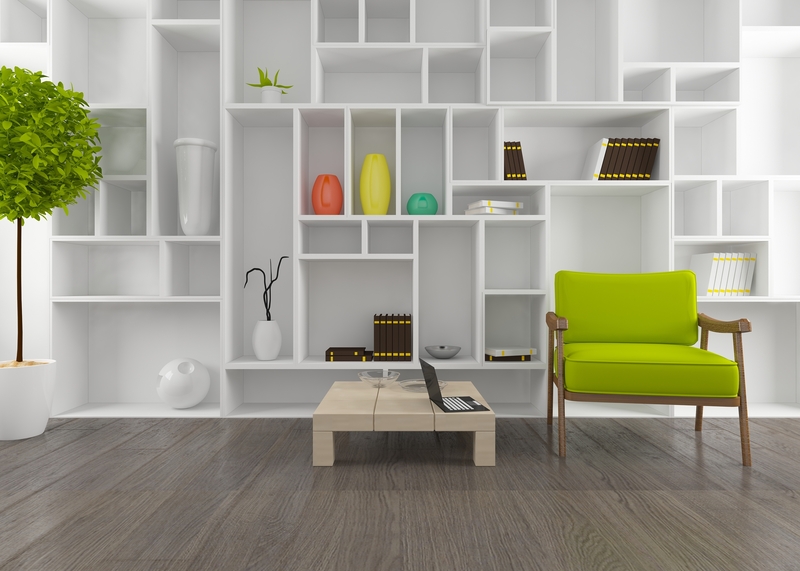Sofa Storing Essentials: Expert-Recommended Tips Unveiled
Posted on 17/05/2025
Sofa Storing Essentials: Expert-Recommended Tips Unveiled
Whether you're relocating, redecorating, or simply looking to clear some space, the value of efficiently storing your sofa cannot be overstated. Proper storage ensures your beloved couch remains in mint condition, extends its lifespan, and preserves your investment. In this comprehensive guide, we unveil expert-recommended sofa storing essentials and insider tips to keep your furniture in top form during storage.

Why Proper Sofa Storage Matters
Sofas are often the centerpiece of the living space and represent a significant financial investment. When not in use, improper storage can lead to damages such as warping, mold, pests, or fading. By following sofa storage best practices, you ensure that your furniture emerges from storage ready to be enjoyed again without costly repairs or replacements.
- Protect fabrics from dirt, dust, and moisture
- Prevent frame damage (wood, metal, or composite)
- Maintain color and upholstery integrity
- Ensure cushions retain their shape
- Reduce risk of pest infestation
Choosing the Right Storage Space for Your Sofa
Selecting the ideal storage environment is the cornerstone of preserving your sofa. Let's explore key factors shaping your decision.
Climate-Controlled Storage: The Gold Standard
Experts unanimously recommend climate-controlled storage units for sofa preservation. These units protect against fluctuating temperatures and humidity, which can wreak havoc on upholstery and wooden frames.
- Temperature regulation prevents wood from expanding and contracting
- Humidity control wards off mold, mildew, and fabric deterioration
- Soft leathers and delicate fabrics stay supple and intact
Size Matters: Ensuring Adequate Room
A common mistake is cramming a large piece like a sofa into a small unit. Allow enough space not only for the sofa but also for air circulation and ease of access.
- Measure the sofa's dimensions (length, width, height) before booking storage
- Choose a unit at least a foot larger in all directions for safe coverage
- Avoid stacking heavy items atop the sofa to prevent indentations and damage
Pre-Storage Sofa Preparation: Cleaning & Disassembly
Before moving your sofa into storage, expert preparation is crucial. Here's how you can prepare your sofa for optimal storage:
Step 1: Thorough Cleaning
- Vacuum all surfaces using an upholstery attachment to remove dust and debris
- Treat stains with a fabric-appropriate cleaner, allowing surfaces to dry completely
- Wipe down leather with a specialist cleaner and conditioner
- Polish wooden or metal legs to keep them looking their best
Step 2: Disassembly for Safe Storage
- Remove cushions and pillows; store them in breathable bags
- If possible, detach legs, arms, or other removable elements to minimize breakage risks
- Keep all screws, bolts, and hardware in labeled bags taped to the sofa frame
Packing Essentials: Protecting Your Sofa in Storage
Your choice of packing materials can determine the condition in which your sofa emerges from storage. Here are the top expert-approved packing essentials:
- Moving blankets or padded covers to cushion and shield upholstery
- Breathable furniture covers (avoid plastic wrap that traps moisture)
- Corrugated cardboard sheets for added structure and protection of delicate elements
- Bubble wrap for legs, arms, and other removable pieces
- Damp-rid packets placed nearby to absorb excess humidity
Pro Tip: Never use plastic directly on the sofa for long-term storage as it can cause moisture build-up and mold growth.
Transporting Your Sofa: Safe Moving Tips
Moving your couch from home to storage requires care to avoid tears, scrapes, or frame damage. Here's how to do it right:
- Enlist enough help or hire professionals to maneuver large sofas safely
- Use furniture dollies and sliders to prevent dragging or lifting-related accidents
- Double check doorways, halls, and elevators to ensure clear paths for transport
- Secure the sofa inside the transport vehicle to avoid shifting and impact damage
The Best Way to Store a Sofa: Ideal Positioning
When it comes to sofa storing techniques, positioning makes all the difference.
- Store sofas upright (on their legs), not on their sides or backs, to prevent structural warping
- Keep sofas elevated on pallets or blocks; this protects against potential floor moisture and allows airflow
- Leave a few inches of space from the wall for air circulation
- Avoid storing anything heavy on the couch to reduce indentations or bending
Handling Sectionals and Recliners
- Disassemble sectionals if possible for compact, safe storage
- Store reclining sofas with mechanisms disengaged to minimize pressure on moving parts
Sofa Storage Maintenance: Ongoing Care Tips
Just because your sofa is in storage doesn't mean you can forget about it completely. Periodic checks help catch problems early.
- Visit every 2-3 months to check for signs of moisture, pests, or damage
- Re-tighten bolts and screws if the sofa was disassembled
- Replace desiccants like Damp-rid or silica packs as needed
- Rotate cushions or shake out pillows to maintain their shape
Expert Answers: Frequently Asked Sofa Storage Questions
Q: How long can I safely store a sofa?
With proper preparation and a climate-controlled space, sofas can be stored for years without issues. However, six months to one year is ideal for non-climate-controlled units.
Q: Can you store a sofa in a garage?
While convenient, garages typically lack temperature and humidity control, exposing sofas to warping, mold, and pests. Short-term storage may work with full protection, but experts recommend climate-controlled units for best results.
Q: Should I wrap my sofa in plastic?
No. Avoid wrapping your sofa directly in plastic for long-term storage, as it can trap moisture and promote mold. Instead, opt for breathable fabric covers.
Q: What is the best way to prevent odors in stored sofas?
Start with a completely clean and dry sofa. Use odor-absorbing products (like activated charcoal pouches) inside the storage unit and allow for periodic ventilation.
Must-Have Sofa Storing Supplies Checklist
- Vacuum cleaner with upholstery attachment
- Approved upholstery or leather cleaners
- Moving blankets and soft covers
- Breathable storage bags for cushions
- Bubble wrap and cardboard sheets
- Furniture dollies and sliders
- Pallets or wooden blocks
- Labelled bags for hardware parts
- Damp-rid or silica gel packets
- Pest deterrents (optional)
Eco-Friendly Sofa Storage: Sustainable Solutions
For the environmentally conscious, consider sustainable materials and methods when storing your couch:
- Use recycled cardboard and blankets instead of single-use plastics
- Choose green-certified storage facilities
- Repurpose old sheets and towels as protective covers
- Donate or recycle packing materials after use
What to Avoid When Storing a Sofa
Avoiding common pitfalls is just as important as following expert sofa storage tips. Never:
- Store your sofa in damp, non-ventilated areas
- Neglect cleaning or drying before storage
- Place furniture directly on concrete floors
- Stack other heavy items on top of the sofa
- Use thick plastic wrap for extended storage periods
Reviving Your Sofa After Storage: Essential Steps
When it's finally time to bring your stored sofa back into your home, a little care ensures comfort and cleanliness:
- Remove all covers and let the sofa air out for a day
- Vacuum and wipe down all surfaces
- Spot clean any new stains
- Reattach hardware and legs securely
- Fluff and reshape cushions and pillows

The Key to Long-Lasting Sofas: Store with Care
As we wrap up this guide to sofa storing essentials, it's clear that preparation, protection, and placement are the pillars of proper furniture storage. By following expert recommendations, you safeguard your sofa against environmental hazards, pests, and time itself.
Remember: The modest effort you invest today will pay off in years of continued comfort and style. Choose the right space, use breathable covers, avoid plastic, and check in periodically. For anyone looking to store a sofa safely, these essentials are your blueprint to success.
Conclusion: Mastering Sofa Storage
Storing a sofa isn't just about tucking it away in a corner. It's a process that, when done right, protects your investment, preserves its appearance, and saves you money in the long run. By following these expert-recommended sofa storing tips, you can confidently store your couch, knowing it will remain in top-notch condition for years to come.
For more guidance or local storage solutions, consider reaching out to furniture care professionals or trusted storage facilities. Your sofa--and your future guests--will thank you.



